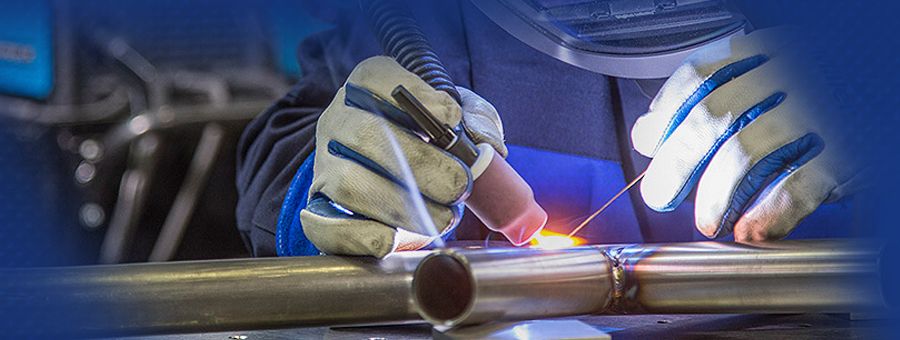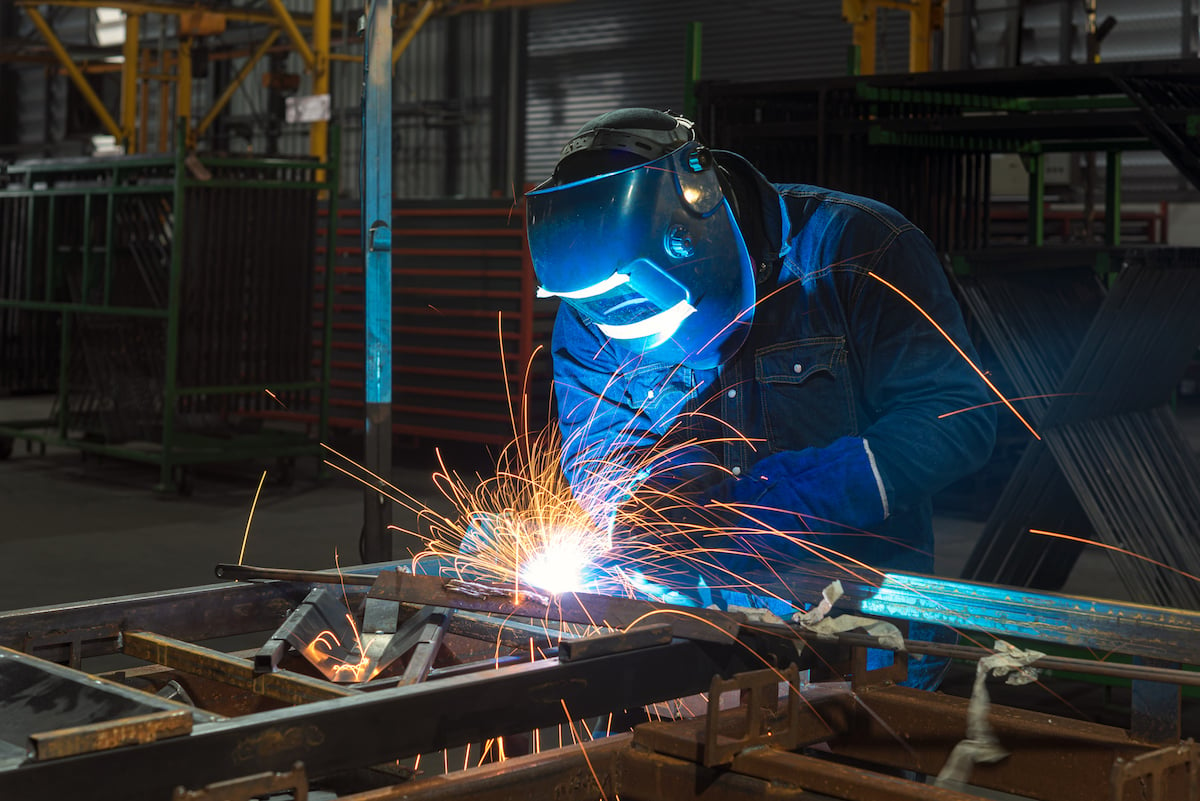Typical Welding Repair Work Issues and Just How to Address Them Successfully
Welding fixings frequently encounter a variety of issues that can jeopardize the stability of the last item. Usual issues include insufficient penetration, porosity, and misalignment, to name a few. Each issue provides distinct challenges that require specific methods for resolution. Comprehending these concerns is essential for welders aiming to boost their results and skills. This conversation will explore these common welding fixing problems and efficient approaches to address them.
Poor Infiltration
Insufficient infiltration happens when the weld steel falls short to completely fuse with the base product, causing weak joints and potential structural failings. This issue frequently originates from not enough warm input, wrong electrode angle, or improper welding rate. Welders might come across poor penetration as a result of a mistake of the needed parameters for a particular product thickness or kind. Additionally, contamination on the base product's surface area can impede reliable bonding, intensifying the problem. To address inadequate penetration, welders must ensure appropriate setups on their tools and preserve a tidy job surface area. Normal examination of welds is suggested to recognize any type of shortages early, permitting for prompt improvements and the prevention of endangered structural stability in welded assemblies.
Porosity
Porosity is a common problem in welded joints that materializes as tiny gas bubbles trapped within the weld steel. This issue can compromise the integrity of the weld, leading to minimized stamina and possible failing under tension. Montana Mobile Welding and Repair Welding. Porosity normally emerges from contamination, dampness, or incorrect welding methods, which enable gases to leave right into the liquified weld swimming pool. To address porosity, welders must ensure appropriate surface preparation, maintain a clean working atmosphere, and utilize appropriate welding parameters. Additionally, picking the right filler product and securing gas can minimize gas entrapment. Normal assessment and screening of welds can help determine porosity early, ensuring prompt restorative activities are taken, consequently preserving the high quality and reliability of the welded structure
Imbalance
Imbalance in welding can develop from various elements, consisting of incorrect setup and thermal expansion. Understanding the source is essential for reliable resolution. Several improvement methods are readily available to straighten elements and guarantee structural stability.
Sources of Misalignment
Welding imbalance typically stems from a variety of underlying issues that can compromise architectural integrity. One key reason is improper fit-up of parts prior to welding, which can result in gaps and irregular surfaces. Variants in thermal growth during the welding process can additionally cause distortion, especially if the products being joined have different coefficients of expansion. Additionally, poor securing and fixturing might fail to hold elements safely in location, leading to movement throughout welding. Improperly kept devices, consisting of welding devices and tools, may present inconsistencies in the weld grain, more contributing to misalignment. Ultimately, operator mistake, coming from not enough training or experience, can also play a considerable duty in developing misaligned welds.
Modification Strategies Readily Available
Addressing imbalance effectively needs a combination of restorative strategies tailored to the specific issues at hand. One usual technique is making use of components or jigs to hold parts in the appropriate placement during welding, guaranteeing regular placement. In addition, preheating the materials can help minimize distortion and enhance fit-up. For considerable imbalance, mechanical realignment techniques, such as utilizing hydraulic jacks or clamps, can be employed to deal with the position before welding. Post-weld warmth therapy might likewise be essential to relieve tensions caused by misalignment. Finally, cautious examination and adjustment throughout the arrangement stage can stop misalignment concerns from ending up being considerable issues, promoting a smoother welding procedure and improving overall structural honesty.
Distortion
Distortion is a common difficulty in welding that can emerge from various elements, including uneven cooling and heating. Comprehending the reasons of distortion is necessary for executing effective prevention methods. Resolving this problem not only improves architectural integrity yet also boosts the overall quality of the weld.
Root causes of Distortion
When subjected to the intense warm of welding, products usually undertake changes that can result in distortion. This phenomenon largely occurs from thermal development and contraction during the welding process. As the weld location heats up, the material increases; upon air conditioning, it gets, which can produce interior stresses. On top of that, irregular home heating across a workpiece can intensify these anxieties, leading to warping or bending. The kind of material likewise plays a considerable function; metals with differing thermal conductivity and coefficients of growth may react differently, causing unpredictable distortions. Moreover, inadequate joint style and insufficient fixturing can contribute to imbalance during welding, increasing the likelihood of distortion. Understanding these causes is essential for reliable welding repair and prevention methods.
Avoidance Techniques
Efficient prevention methods for distortion throughout welding concentrate on controlling heat input and making certain correct joint style. Keeping a constant warmth input assists to decrease thermal expansion and contraction, which can bring about distortion. Utilizing strategies such as pre-heating the work surface can also lower the temperature gradient, advertising uniform home heating. In addition, picking proper joint styles, such as T-joints or lap joints, can boost stability and reduce tension concentrations. Applying appropriate fixturing to secure the work surfaces in position better help in preserving positioning during the welding procedure. Staggered welding sequences can disperse warmth extra uniformly, avoiding local distortion. By using these techniques, welders can substantially reduce the probability of distortion and enhance the total high quality of their welds.
Splitting
Splitting is a common problem come across in welding repairs, frequently resulting from various aspects such as inappropriate cooling rates, product choice, or poor joint preparation. The occurrence of fractures can greatly jeopardize the integrity of the weld, bring about prospective failures throughout procedure. To address this problem, welders should initially examine the origin, ensuring that products work and suitably selected for the certain application. In addition, managing the air conditioning price during the welding procedure is important; fast cooling can generate tension and bring about breaking. Correct joint style and prep work also add to decreasing the threat. Carrying out these techniques can boost weld high quality and sturdiness, inevitably reducing the chance of cracking in completed weldments.

Insufficient Fusion
A significant problem in welding repairs is incomplete blend, which takes place when the weld metal does not properly bond with the base product or previous weld passes - Montana Mobile Welding and Repair Welding. This issue can bring Read Full Report about weak points in the joint, potentially jeopardizing the honesty of the welded structure. Factors adding to insufficient blend consist of insufficient warm input, inappropriate welding strategy, and contamination of the surfaces being signed up with. To address this problem efficiently, welders ought to ensure proper pre-weld cleaning and surface prep work, along with adjust their welding parameters to achieve ample penetration and fusion. Routine assessment discover this throughout the welding procedure can additionally assist identify incomplete fusion early, allowing for prompt rehabilitative steps to boost the general quality of the weld
Overheating
While welding fixings can improve structural integrity, overheating provides a substantial obstacle that can result in material destruction. Too much heat during welding can modify the mechanical buildings of steels, resulting in minimized strength, increased brittleness, and warping. This sensation is particularly important in high-stress applications where architectural integrity is critical. Recognizing overheating can involve aesthetic inspections for staining or distortion, along with keeping an eye on temperature level during the welding process. To reduce the dangers linked with getting too hot, welders ought to employ proper strategies, such as regulating warm input, changing travel rate, and utilizing suitable filler materials. Furthermore, executing pre- and post-weld heat therapies can help restore material residential properties and improve the total quality of the repair service, ensuring long-lasting performance and security.
Regularly Asked Concerns
What Are the Usual Signs of a Welding Flaw?

Just How Can I Examine My Welds for Quality?
To evaluate welds for quality, one can use aesthetic evaluations, ultrasonic screening, and radiographic techniques. Each method guarantees structural honesty, recognizes problems, and confirms adherence to specified criteria, inevitably enhancing the reliability of the bonded joints.
What Security Precautions Should I Take While Welding?
When welding, one must focus on safety and security by wearing proper individual safety equipment, making sure appropriate ventilation, protecting flammable materials away, keeping a tidy work space, and being aware of environments to avoid injuries and accidents.
Can I Repair a Weld Without Redesigning the Entire Joint?
Repairing a weld without remodeling the whole joint is feasible, depending upon the damages (Welding). Methods such as grinding, adding filler material, or using a welding process can efficiently deal with particular defects while maintaining the bordering structure
What Tools Are Crucial for Reliable Welding Fixes?
Essential tools for reliable welding repair services include a welding maker, wire brush, mill, protective equipment, clamps, and filler materials. Each device plays a vital function in making certain quality and safety and security during the repair work procedure. Porosity normally develops from contamination, wetness, or inappropriate welding strategies, which allow gases to leave right into the liquified weld pool. Badly kept tools, consisting of welding machines and tools, may introduce incongruities in the weld grain, additional adding to imbalance. When subjected to the extreme warmth of welding, materials often go through changes that can lead to distortion. Splitting is a common problem experienced in welding fixings, try this out frequently resulting from numerous factors such as inappropriate air conditioning prices, material option, or insufficient joint prep work. A substantial problem in welding fixings is insufficient combination, which takes place when the weld steel does not appropriately bond with the base material or previous weld passes.
Comments on “Field guide for weld distortion by Belgrade Fabrication”